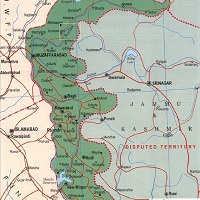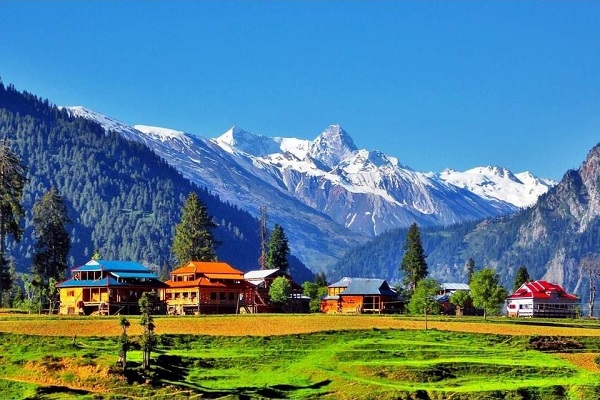Mirpur Azad Kashmir also known as Azad Jammu & Kashmir, shortened as AJK & locally known as merely Azad Kashmir, is an area controlled by Pakistan. It is an autonomous entity that forms the western fraction of the larger Region of Kashmir, which has been the matter of a conflict between Pakistan and India since 1947.
The territory is bordered to the north by GB (Gilgit-Baltistan) and is referred to as “Pakistani-controlled Kashmir” by the UN & other international agencies. Azad Kashmir is also bordered to the west and south by the Pakistani provinces of KPK and Punjab. The total area of Azad Kashmir is 13,297 km². Mirpur Azad Kashmir Weather is hot in day time in summers while cold in the night.
| Title | Description |
|---|---|
| Information | |
| Details | |
| Location: | Pakistan |
| Assembly seats: | 49 |
| Districts : | 10 |
| Towns: | 19 |
| Union Councils : | 182 |
| President : | Sultan Mehmood Chaudhry |
| Prime Minister: | Sardar Abdul Qayyum Niazi |
| Capital Mirpur: | Muzaffarabad |
| Type: | The autonomous territory of Pakistan |
| Body: | Legislative Assembly |
| Area Total: | 13,297 km2 (5,134 sq mi) |
| Density: | 343.535/km2 (889.75/sq mi) |
| Totals: | 4,567,982 |
| Time zone : | PKT (UTC+5) |
| ISO 3166 code: | PK-JK |
| Main Language: | Urdu (official) Pahari Mirpuri Gojri Hindko Punjabi Pashto |
| Main Language: | Urdu (National & Official) and Pahari language |
| Anthem: | Watan Hamara Azad Kashmir |
| Country: | Pakistan |
| Established : | 1 July 1970 |
| Coordinates: | 34.22°N 73.28°E |
| Website: | azadkashmir.gov.pk |
Table of Contents
Name
The heading of a pamphlet produced by the Muslim Conference party during its thirteenth general session in Poonch in 1945 was Azad Kashmir. It is thought to be a reaction to the National Conference’s New Kashmir agenda. According to sources, it was little more than a collection of different resolutions made by the party.
However, it appears that the intention was to announce that the Muslims of J&K were devoted to the Muslim League’s quest for a separate country (Pakistan) and that the Muslim Conference was their single representative organization.
Geography of AJK
The northern region of Jammu & Kashmir includes the lower Himalayas, notably Jamgarh Peak (15,531 ft). The tallest mountain in the state, however, is Sarwali Peak (6326 m) situated in the Neelum Valley. Rainfall falls in the region both in the summer and in winter. Pattan and Muzaffarabad are two of Pakistan’s wettest areas.
The average rainfall in most of the Mirpur Azad Kashmir region exceeds 1400 millimeters, with the highest total rainfall nearby Muzaffarabad (almost 1800 mm). Monsoon floods of the rivers Leepa and Jhelum are common throughout the summer season due to heavy rains & snow melting.
Azad Kashmir History
When India was partitioned in 1947, the British left their rulership over the princely states, leaving them with the choice of joining Pakistan or India or staying independent. Hari Singh, the maharaja of J&K, wished for his state’s independence. Muslims living in the western areas of Azad Kashmir and Gilgit-Baltistan had wished to enter Pakistan.
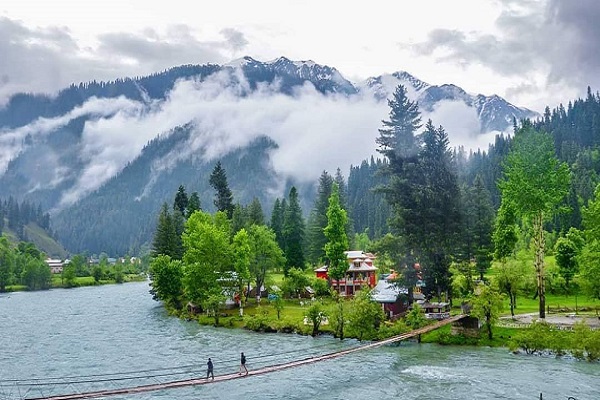
Voice Against Taxes
In the spring of 1947, an insurrection against the maharaja erupted in Poonch, a region of West Punjab bordering the Rawalpindi division. The maharaja’s government is claimed to have begun levying harsh taxes on the peasantry, which sparked a local insurrection, which the state brutally suppressed.
The district’s inhabitants, bolstered by demobilized soldiers from World War II, rose up against the maharaja’s military and took control of nearly the entire district.
Entrance of Pashtun Individuals
Thousands of Pashtun tribes’ individuals from the NWFP flooded into Jammu & Kashmir on 21st Oct to “free” it from the control of Maharaja. They were guided by competent military personnel and armed with cutting-edge technology. The disintegrating armies of the maharaja were not able to resist the onslaught.
The invaders took Baramulla and Muzaffarabad. On 24th Oct, the maharaja demanded military aid from India, which replied that it could not support him unless he agreed to India’s terms. As a result, on 26th Oct 1947, Hari Singh approved an Accession, ceding control of the defense, communications to the Indian Government, and external affairs in return for the military support.
Indian forces were flown into Srinagar. Pakistan subsequently intervened. Fighting erupted between the Pakistani and Indian forces, with the two regions of control eventually becoming more or less stable around that is now called LOC (Line of Control).
Division of Kashmir
After the 1949 cease-fire accord with India, the Pakistani government divided the western and northern regions of Kashmir that it owned during the period of the cease-fire into two independent governmental entities:
- AJK-the southern region, 250 mi long and 15 to 65 km wide (10 to 40 mi).
- Gilgit–Baltistan, historically known as FANA (Federally Administered Northern Areas), is a substantially bigger governmental entity to AJK’s north covering 27,991 sq. mi.
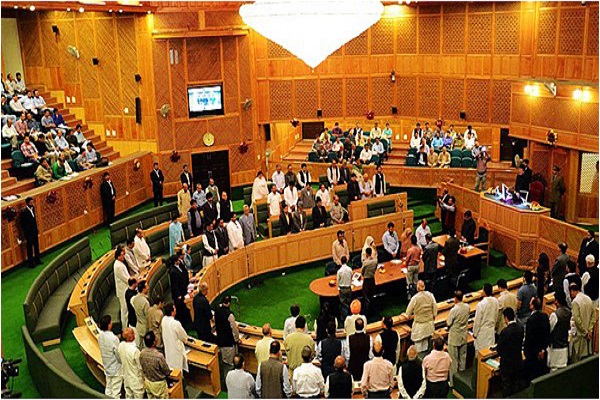
Mirpur Azad Kashmir Government
AJK is a self-governing territory, but Pakistan has exerted control over it without actually merging it into Pakistan since the 1949 truce between Indian and Pakistani armies. AJK has its own democratically elected president, PM, legislative assembly, flag, and high court.
The AJK Council handles Mirpur Azad Kashmir financial matters, such as budget & tax affairs, rather than by the Central Board of Revenue of Pakistan. The Council is a top body of fourteen members, eight from the Azad Jammu and Kashmir administration and six from the Pakistani government.
The current Prime Minister of Azad Kashmir is Sardar Abdul Qayyum Niazi while the president of Azad Kashmir is Sultan Mehmood Chaudhry. The first Azad Kashmir Prime Minister was Khan Abdul Hamid Khan. Furthermore, a notable personality Syed Ali Shah Geelani became the voice of the Kashmiri people who fought their cases despite many hardships.
Administrative Divisions
- Poonch
- Muzaffarabad
- Mirpur
Azad Kashmir Weather
The Mirpur Azad Kashmir weather is extremely hot in summers and moderately chilly winters. They primarily get rain during the monsoon season. The temperature in the state’s central & northern regions remains relatively hot in the summer season and cold and frosty in the winter. In Dec and Jan, there is also snowfall.
Mirpur Azad Kashmir Demographics
Azad Kashmir Population
As per the preliminary findings of the 2017 Census, the population of Mirpur Azad Kashmir is 4.045 million. According to the government’s website, the literacy rate is 74%, with primary school enrollment rates of 98 percent and 90 percent for boys & girls, respectively.
Religion
The population of Jammu & Kashmir is almost completely Muslim. As per data compiled by Christian groups organizations, the region has approximately 4,500 Christian citizens. The majority of them live in Bhimber, followed by Muzaffarabad and Mirpur. The Christian community has been fighting for residential status & property rights.
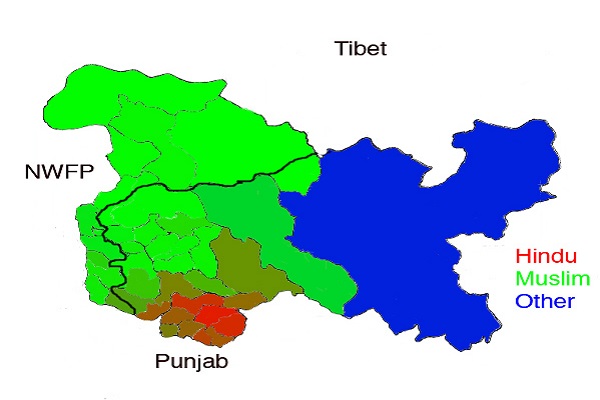
Ethnic Groups
- Kashmiris
- Dhund
- Awans
- Mughals
- Jats
- Rajputs
- Sudhans
- Kotli
- Gujjars
Languages Spoken
Urdu is the official language while English is adopted in high domains. However, the large proportion of the population is made up of local speakers of other dialects. The most prominent of these is Pahari–Pothwari, which has several dialects.
Economy of Mirpur Azad Kashmir
It was predicted to be 6.5 billion dollars in 2021, with a per capita revenue of 1,512 dollars. Historically, the Azad Kashmir economy was agricultural, meaning that land was the primary means of production. It implies that all food items, both long-term and immediate, were grown on land.
The product includes a variety of crops, vegetables, and fruits. The land also provided other essentials for survival, like wood, fire, and pasture for animals, which were later transformed into dairy products.
Places to Visit in Azad Kashmir
- New Mirpur City
- Leepa Valley
- Bagh
- Rawalakot
- Sudhanoti
- Neelam Valley
- Keran Azad Kashmir
- Muzaffarabad
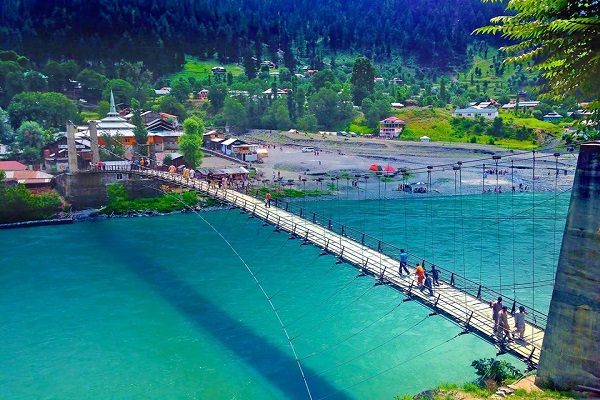
Literacy Rate of Mirpur Azad Kashmir
In 2004, the literacy rate was 62 percent, the highest in Pakistan. In 2018, the literacy rate of Mirpur Azad Kashmir was 76.60 percent. In 2019, it stayed at 76.80 percent. But only 2.2 percent were graduates, comparing with Pakistan’s average of 2.9 percent.
Mirpur Azad Kashmir Zip Code
The Zip code of Azad Kashmir is 10250.
Social Media Handle
https://www.facebook.com/azadkashmirmyk/
